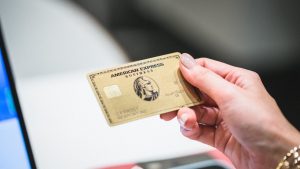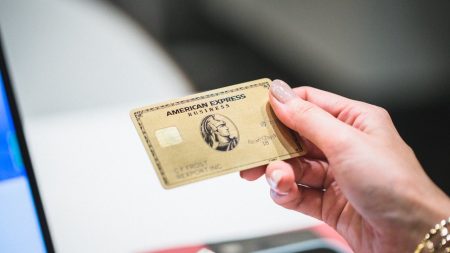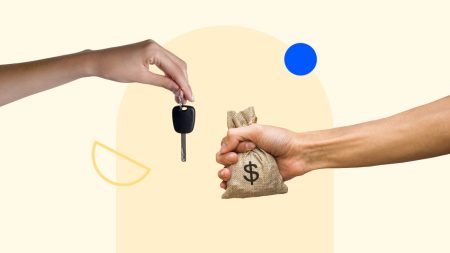Key takeaways
- Public Service Loan Forgiveness discharges federal student loan balances for certain workers in qualifying public service jobs.
- You must make 120 months of payments to qualify for the discharge.
- Federal Direct Loans and consolidated FFEL and Federal Perkins Loans qualify for forgiveness under this program.
- While President Donald Trump recently attempted to restrict eligibility for PSLF via an executive order, this change must go through a rulemaking process before it is official.
Public Service Loan Forgiveness (PSLF) is a federal student loan forgiveness program that discharges the remaining student loan balances of qualifying government and non-profit workers after 120 qualifying payments. It was created in 2007 to encourage college graduates to work in public service jobs, which often come with lower salaries.
However, to earn loan forgiveness through this program, you must meet certain qualification requirements. While the Trump administration has recently targeted PSLF eligibility, such calls for changes to the program may face legal challenges and take time to implement. It’s important to stay updated on changes to the program.
Despite some uncertainty, the program is still available for borrowers who qualify. It can save hundreds or thousands of dollars on your student loans, so it is worth finding out if you are eligible.
How Public Service Loan Forgiveness works
To begin working toward PSLF, borrowers must meet all of the requirements for the program from the start.
To ensure that you’re set up for success with PSLF, the U.S. Department of Education recommends filling out a PSLF and Temporary Expanded PSLF (TEPSLF) Certification and Application (PSLF Form) every year or each time you change employers. Both forms are included on the same application, which can be found on the Education Department’s website.
The Department of Education uses the information on this form to let you know if the payments you’re making are eligible to count toward PSLF. If not, you’ll have to take steps to get on track toward PSLF before you can begin making any progress.
Once you’re on track for PSLF and qualify for the program, you’ll need to make 120 qualifying payments. Afterward, any remaining loan balances you have will be forgiven. Best of all, you don’t have to pay income taxes on forgiven loan amounts.
Why PSLF can be beneficial for borrowers
If you have a considerable amount of student loan debt, Public Service Loan Forgiveness could potentially save you tens of thousands of dollars. PSLF might also knock years (or decades) off of your repayment timeline.
Keep in mind that you can repay your student loans on an income-driven repayment plan without pursuing PSLF, which is a better option for people who don’t meet the career requirements. Under the IDR plan, your monthly payments will be adjusted based on your annual income and family size, but you’ll make payments on your loans for 20 to 25 years before your loans are forgiven.
How to qualify for PSLF
Before your loans are forgiven, check to see if you qualify for PSLF. You’ll need to work full-time for a qualifying employer, have Direct Loans under an income-driven repayment plan and make 120 qualifying payments to get the remainder of your loans forgiven. Make sure you keep a record of your payment history, proof of eligible employment and any communication with your servicer – this documentation may help sort out any issues that may arise.
Employment
You’ll need to work either as a full-time employee or at least 30 hours per week (whichever is greater) for a qualified employer. You may also work multiple part-time jobs as long as you average at least 30 hours per week with qualified employers.
A qualified employer is any U.S. government agency at the federal, state, local or tribal level. You can also work for 501(c)(3) nonprofit organizations or volunteer for AmeriCorps or the Peace Corps.
Groups that do not count as qualifying employers include:
- For-profit organizations, even if those organizations are government contractors.
- Partisan political groups and organizations.
- Labor unions.
You’ll need to work either as a full-time employee or at least 30 hours per week (whichever is greater). You may qualify if you work multiple qualifying part-time jobs as long as you average at least 30 hours per week with your employers.
In the news
On March 7, President Donald Trump signed an executive order changing the PSLF eligibility guidelines. Under the executive order, employees of certain nonprofit organizations that engage in activities that violate immigration laws, support terrorism or provide gender transition care to minors would no longer qualify for PSLF. However, such organizations have yet to be defined. An executive order cannot by itself alter qualification requirements for PSLF. Legally, changes to the program must go through a rule-making process and any change would take a considerable amount of time to implement.
Qualifying loans
Not all types of student loans qualify for loan forgiveness. All federal Direct Loans are eligible, but FFEL and Federal Perkins Loans are not. Federal student loans that are in default are not eligible for PSLF, either. However, there is a workaround for these loans. If you consolidate FFEL, Perkins or defaulted loans into a Direct Consolidation Loan, they might become eligible. Keep in mind that any payments made on these loans before they were consolidated do not count toward forgiveness.
Private student loans do not qualify for PSLF and cannot be consolidated into a Direct Consolidation Loan to become eligible.
Loans eligible for PSLF
- Direct Loans
- Direct Consolidation Loans
Loans not eligible for PSLF
- Private student loans
- Federal Family Education Loans (FFEL)
- Federal Perkins Loans
- Federal loans in default
Qualifying payments
To be eligible for PSLF, you need to make at least 120 qualifying payments toward your federal student loans.
Typically, as you make those payments, you must be enrolled in an income-driven repayment plan (IDR) that bases your payment size on your monthly income. Changes to existing IDR programs may happen in the near future, so it’s important to stay updated on student loan news.
The standard repayment plan also qualifies for PSLF, though this repayment plan typically sets you up to pay off your student loans within 10 years — in other words, the same amount of time it takes to qualify for discharge with PSLF. So, by the time you reach the 10-year mark, you will not have any balance left to discharge.
Borrowers enrolled in the SAVE plan are currently in an administrative forbearance in which a payment is not required, and student loan interest is not accruing. If you are one of those borrowers, know that any payment you make while in forbearance will not count toward PSLF. You may want to either switch out of your plan to move out of forbearance or participate in the PSLF buyback program, which allows you to purchase forbearance months and change them into qualifying payments.
How to apply for PSLF
First, you need to complete the PSLF application. You can submit this application after you’ve made 120 qualifying payments. However, the Department of Education recommends instead submitting the form while you’re working toward PSLF to complete your employer certification process.
Make sure you continue making payments while your application is being processed. If you get approved after making the 120 payments and have overpaid, you’ll be refunded for the qualifying payments.
You should also submit the form annually or when you switch employers to ensure you’re still on track for forgiveness. You can either start the PSLF form online or download a copy to fill out by hand. In both cases, your employer must provide verification.
If your application is approved, you’ll be notified that the remaining principal and interest balance on your student loans is forgiven.
If your application is denied, you’ll get a notification with an explanation. For instance, if you didn’t work for a qualifying employer or didn’t make qualifying payments, you could face PSLF rejection.
How to avoid mistakes when applying for PSLF
PSLF is an excellent loan forgiveness program for those who can make it work. A disproportionate amount of people who applied for PSLF in the past were not cleared for forgiveness, which was why the temporary waiver was implemented.
Many PSLF applications were previously deemed ineligible for forgiveness based on various reasons. Common reasons for rejection included ineligible payments, missing information on the application or loans that were ineligible to begin with.
To increase your chances of approval, the best thing you can do is apply and fill out the PSLF and Temporary Expanded PSLF Certification & Application (PSLF Form) every year and any time you change employers. This form lets you verify that your payments are being counted toward PSLF. Be sure to include all required information for your employer, including an Employer Identification Number (EIN).
Another smart step is to keep your application information and employment dates consistent from year to year. Also, maintain a track record of on-time payments through a qualifying repayment plan. Make sure to keep proof of payment and employer eligibility and have copies of all communication with your service and Federal Student Aid (FSA).
Bottom line
Public Service Loan Forgiveness can be a great option for public service workers who are looking to get some of their student loans forgiven. Not everyone qualifies, but you can complete a PSLF form annually to see if you’re on track. If you’re not eligible, there are other forgiveness programs and repayment options available through the federal government that you may be able to take advantage of.
Read the full article here












